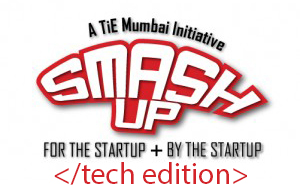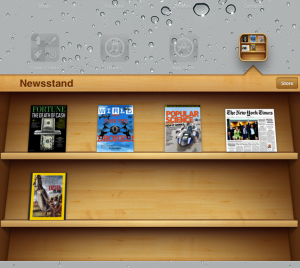This is an extract from the keynote I gave at TieSmashup 2.0 last Saturday on 8th Sept, 2012 at IIT Mumbai. The goal was to highlight the importance of business apps and why there is an opportunity. The excerpt has been modified to remove the ramblings. The keynote followed a panel discussion with Narayan of Dexetra and Deepak Ravindran of Innoz. The learnings from the panel would be in a future post.
 Information Technology has bestowed us a 10-year pro-creation cycle. Every 10 years comes an opportunity to innovate and recreate things from scratch. We learn from the wisdom of the previous cycle and attempt to make things 10x better than the previous one. Each cycle gives an immense opportunity of wealth creation and to make the world a happier place to live by making us more connected. How do you as an entrepreneur in the audience benefit from this?
Information Technology has bestowed us a 10-year pro-creation cycle. Every 10 years comes an opportunity to innovate and recreate things from scratch. We learn from the wisdom of the previous cycle and attempt to make things 10x better than the previous one. Each cycle gives an immense opportunity of wealth creation and to make the world a happier place to live by making us more connected. How do you as an entrepreneur in the audience benefit from this?
Before lunch time, I heard entrepreneurs talk about website, web-presence, social media, etc. To you as an entrepreneur, anything web related is a thing of past. There are too many people solving problems around the web. The freshness is no longer there. You should be looking three years ahead of everybody. Internet is for the connectivity backbone and the web as yet any other channel. Instead, you should be doing things on mobile. When I say mobile, I don’t mean, yet another app for social, local, news.
Going back to the 10 year pro-creation cycle of IT, this started with:
- 1980s – Gave us mainframe.
- 1990s – Gave us Personal computers.
- 2000s – Gave us Internet.
- 2010s – Now, the Mobile boom beckons.
Each cycle gives us opportunities which were 10x beyond what it was earlier. For example, the number of consumers for mainframes were not more than a million, followed by 100 million units for PCs, followed by 1 billion internet users. Guess what–10 billion mobile phones would be shipped by 2016. The current IT spend combined across hardware, software, mobile, PC, whatever, is around $1.6 trillion worldwide out of which 18% is for mobile.
I think Mobile is huge, much bigger than what Web was. As an entrepreneur, I believe that mobility is going to fundamentally change how people connect with machines and humans. In a small way it is already happening at home. A progressive doctor in a clinic at Bangalore, uses an app on his smartphone for appointments of a day before his day begins and carries an iPad to keep himself in the loop of patients and peers.
Why Enterprise apps or apps for businesses? You as an entrepreneur should be building things where money is made in every transaction and provides utility to the masses. There are close to one million apps on the appstore. However, 50% of them do not have any ratings nor any significant downloads. Why? Because, 100s of similar apps already exist. Instead of focusing on the usual mix of photo sharing, news aggregation, location, social, games, etc. I feel that you should be building apps for businesses. This is a large opportunity and few are paying attention.
That’s the path I chose at Bitzer. We at Bitzer are building some necessary infrastructure which businesses of tomorrow would need. We are building a secure remote access product which enables an enterprise to become mobile. It’s like VPN but much more done for mobile from the ground-up. Right from accessing the business applications in the intranet, files & folders, intranet websites, e-mail and more. I feel that connectivity is the missing piece in employee productivity. What we are attempting is akin to creating some of the well known Internet infrastructure companies during the internet boom of late-90s/early-2000s, which created the back-bone of the internet, gave the necessary tools to large companies to run their business.
To give you some example of how businesses are rapidly moving onto mobile, esp. adopting tablets, one of the largest domestic carriers in US called Alaska Airlines, removed 11kgs of flight manuals from it’s planes and swapped it with a 700 gram iPad with apps on it. Soon other airlines followed. Thanks to the introduction of iPad now the uber-important flight plan is being sent digitally. Another example is–how mobile apps are changing agriculture in America. There are apps which help increase the produce and predict the harvest time, pest infestation, etc. by analyzing the pictures of the farm. A few other apps exist for farming. There is a separate industry being born for connecting the mobile to the real-world in terms of accessories for such businesses.
Another big area for business apps is healthcare. There are apps which check your pulse followed by helping you communicate with a doctor remotely. The day is not far when your diagnosis will start before you reach the doctor’s clinic. In future, a specialized app will be capable of analyzing your ailments based on pulse, temperature and heartbeat. The apps fundamentally change how people would communicate with each other.
Don’t look at building apps which make our lives incrementally better, rather take on things which are orthogonal to the current trend. I urge you to build apps for business, which look unsexy but these are much bigger opportunities.
Updated Sep 17. Edited and many fixes.

